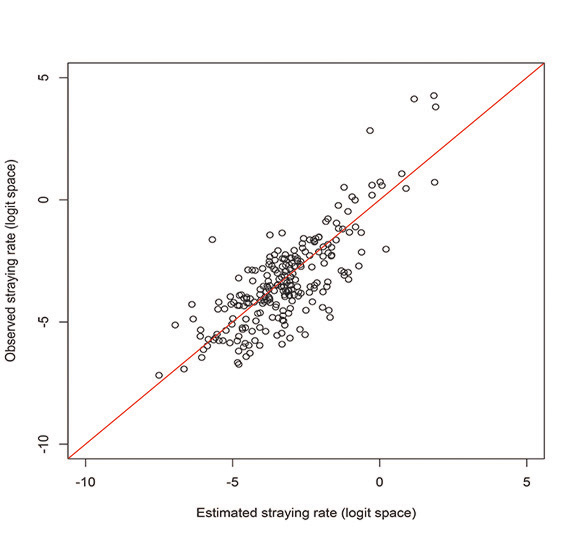
Ecological Archives E096-247-A1
Peter A. H. Westley, Andrew H. Dittman, Eric J. Ward, and Thomas P. Quinn. 2015. Signals of climate, conspecific density, and watershed features in patterns of homing and dispersal by Pacific salmon. Ecology 96:2823–2833. http://dx.doi.org/10.1890/14-1630.1
Appendix A. Model diagnostics for Bayesian logistic regression to estimate the influence of abiotic, biotic, and anthropogenic factors influencing rates of dispersal (straying) in 19 stream-type Chinook salmon populations produced in hatcheries of the Columbia River basin.
Fig. A1. Relationship between observed rates of straying (logit space) in 19 populations of hatchery-produced Chinook salmon across 17 years vs. the estimated rate of straying (logit space) predicted from Bayesian logistic regression. See main text for model details and included covariates. The red line is the 1:1 relationship.
Fig. A2. Estimated rates of straying by 19 populations of hatchery-produced Chinook salmon (each population shown as unique number or letter) across 17 years predicted from Bayesian logistic regression. The model largely captures the inter-annual trends of observed straying by these populations as depicted in Fig.1B in the manuscript text. See main text for model details and included covariates.
Fig. A3. Model fits (logit [p] with 95% credible intervals) to individual-population time series of straying. Points are observed non-zero estimates of straying rates. Differing interval widths over time and populations are a function of sample size.